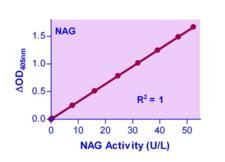Login
Registration enables users to use special features of this website, such as past
order histories, retained contact details for faster checkout, review submissions, and special promotions.
order histories, retained contact details for faster checkout, review submissions, and special promotions.
Forgot password?
Registration enables users to use special features of this website, such as past
order histories, retained contact details for faster checkout, review submissions, and special promotions.
order histories, retained contact details for faster checkout, review submissions, and special promotions.
Quick Order
Products
Antibodies
ELISA and Assay Kits
Research Areas
Infectious Disease
Resources
Purchasing
Reference Material
Contact Us
Location
Corporate Headquarters
Vector Laboratories, Inc.
6737 Mowry Ave
Newark, CA 94560
United States
Telephone Numbers
Customer Service: (800) 227-6666 / (650) 697-3600
Contact Us
Additional Contact Details
Login
Registration enables users to use special features of this website, such as past
order histories, retained contact details for faster checkout, review submissions, and special promotions.
order histories, retained contact details for faster checkout, review submissions, and special promotions.
Forgot password?
Registration enables users to use special features of this website, such as past
order histories, retained contact details for faster checkout, review submissions, and special promotions.
order histories, retained contact details for faster checkout, review submissions, and special promotions.
Quick Order
| Catalog Number | Size | Price |
|---|---|---|
| LS-K253-100 | 100 Tests | $530 |

Beta-N-Acetylglucosaminidase (NAG) Assay Kit (Colorimetric) - LS-K253
Beta-N-Acetylglucosaminidase (NAG) Assay Kit (Colorimetric) - LS-K253
Available for shipment within the USA only
Description:
Beta-N-Acetylglucosaminidase (NAG) is a lysosomal enzyme involved in a variety of biological processes such as the degradation of glycoproteins and glycolipids, cell proliferation, and signal transduction. NAG is found in many tissues in the body, but due to its high molecular weight, it can not be filtered through the glomerular membrane. For this reason, in the presence of tubular damage or a glomerular lesion, urinary NAG activity increases. Elevated NAG levels in urine are an early indication of renal damage, such as injury due to diabetes mellitus, inflammation, nephritic syndrome, urinary tract infection, and more. Various forms of cancer have been associated with increased levels of NAG in serum. Genetically inherited lipid storage disorders, such as Tay-Sachs and Sandhoff disease, arise from deficiencies of the enzyme. This non-radioactive, colorimetric NAG assay is based on the cleavage of p-nitrophenol from a synthetic substrate. p-Nitrophenol becomes intensely colored after addition of the stop reagent. The increase in absorbance at 405 nm after addition of the stop reagent is directly proportional to the enzyme activity.
Available for USA Shipment Only
Toll Free North America
 (800) 227-6666
(800) 227-6666
For Research Use Only
Overview
Description:
Beta-N-Acetylglucosaminidase (NAG) is a lysosomal enzyme involved in a variety of biological processes such as the degradation of glycoproteins and glycolipids, cell proliferation, and signal transduction. NAG is found in many tissues in the body, but due to its high molecular weight, it can not be filtered through the glomerular membrane. For this reason, in the presence of tubular damage or a glomerular lesion, urinary NAG activity increases. Elevated NAG levels in urine are an early indication of renal damage, such as injury due to diabetes mellitus, inflammation, nephritic syndrome, urinary tract infection, and more. Various forms of cancer have been associated with increased levels of NAG in serum. Genetically inherited lipid storage disorders, such as Tay-Sachs and Sandhoff disease, arise from deficiencies of the enzyme. This non-radioactive, colorimetric NAG assay is based on the cleavage of p-nitrophenol from a synthetic substrate. p-Nitrophenol becomes intensely colored after addition of the stop reagent. The increase in absorbance at 405 nm after addition of the stop reagent is directly proportional to the enzyme activity.
Specifications
Name
Beta-N-Acetylglucosaminidase (NAG) Assay Kit (Colorimetric)
Type
Detection/Quantition
Usage
Beta-N-Acetylglucosaminidase activity determination in biological samples.
Target
Beta-N-Acetylglucosaminidase
SampleType
Cell Lysates, Plasma, Serum, Urine
Detection
Colorimetric (405 nm Absorbance)
Supplied Components
The following components are supplied with this product.
- Substrate
- Stop Reagent
- Standard (12.5mM Nitrophenol)
- (See Datasheet for specific volumes supplied)
Applications
Spectrophotometry (visible)
Equipment
Microplate spectrophotometer (visible)
Conditions
Shipped Ambient, Store at -20°C. Avoid freeze-thaw cycles, 12 months shelf life.
Documents
Restrictions
For research use only. Intended for use by laboratory professionals.
Available for shipment within the USA only
Guarantee
This Assay Kit carries the LSBio 100% Guarantee
Publications (0)
Customer Reviews (0)
Images
Colorimetry

Colorimetry

Colorimetry

Colorimetry

Request SDS/MSDS
To request an SDS/MSDS form for this product, please contact our Technical Support department at:
Technical.Support@LSBio.com
Requested From: United States
Date Requested: 1/4/2025
Date Requested: 1/4/2025









